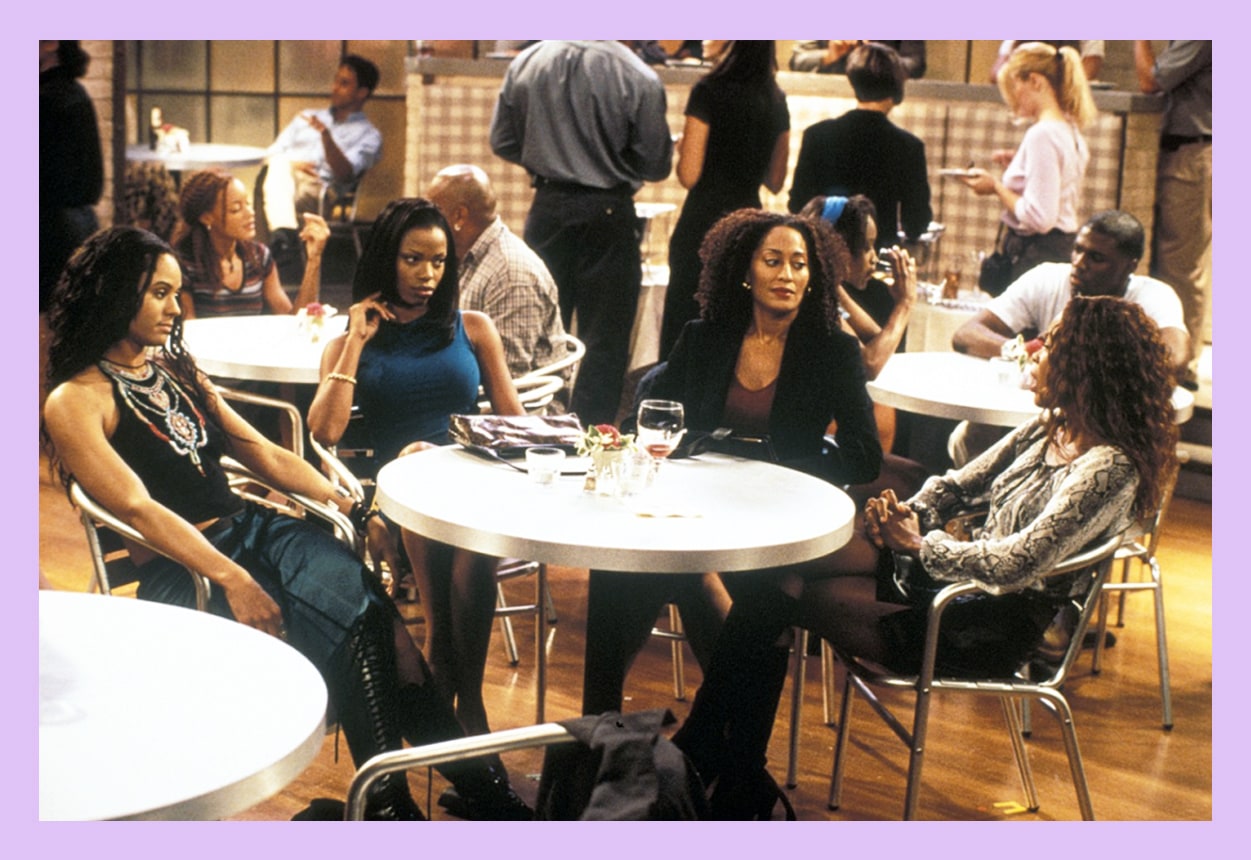 L-R: Characters Lynn, Toni, Joan, and Maya from an early season of Girlfriends.
UPN/Paramount
L-R: Characters Lynn, Toni, Joan, and Maya from an early season of Girlfriends.
UPN/Paramount
“Girl, black people don’t go to therapy. They go to church,” Maya says to Joan in the season two opener of Girlfriends, the long-running sitcom about thirtysomething black women that aired for eight seasons on UPN (and later The CW). Joan, never one to compromise her identity, responds without an air of hesitation: “I’m black and I went to therapy.”
In the show’s celebrated history, the exchange is a very minor one. But it’s partly where the genius of Girlfriends drew much of its power from: creator Mara Brock Akil set about to challenge and affirm the idea of what it meant to be a modern black woman. Who was she? How did she move through the world? What were her motivations, beliefs, and passions?
Joan’s often overwrought, but also a giver with good intentions (most of the time). Toni, her best friend who is known for brash knee-jerk reactions, is mostly loyal to Joan; still, she’s undoubtedly the more self-serving one in their relationship. In the episode (“Just Say No”), Joan struggles with the pressure — brought on by a chorus of others — to end her and Toni’s rocky friendship. She ultimately takes a hint from another friend, Lynn, who suggests she go to therapy.
Black women have historically been inundated with the notion that we can take anything and carry it without complaint. It’s true: we are sublime, but imperviousness is not our superpower. In Joan’s case, Girlfriends supported the idea that there was nothing shameful about taking the extra step to gain more understanding in order to be a better friend to our sisters (which, in turn, also aids in our own self-development).
Girlfriends never shied away from the unpleasantries of friendship. Without sensationalizing drama between black women, Brock Akil championed and unpacked the nuances of black sisterhood. Take Maya, for instance: by most accounts, she’s tougher than the rest of the ladies in the crew. A driven young mother full of impeccable comebacks, she weathers a series of emotional bouts over the course of the series: an unstable marriage, divorce, single motherhood, and an eventual reconciliation with her husband, Darnell. For much of the show, she’s known as Joan’s fiery assistant turned sistren. Still, despite the professional hierarchy, the storyline honors the dimensions of Maya’s life. As a young girl, she represented a truth I wouldn't fully understand until much later: that even though some of us may not have an excess of things, we don’t have to accept limits placed upon us.
During Girlfriends eight years on television, I started my formative journey through adolescence. It was before I knew the type of woman I’d become, but because of its layered representations, that I was able to imagine my future self in the women I watched every week. I admired their tendencies to be unabashedly quirky, flawed, and vulnerable in the sanctuaries of their sisterhood. I was reassured by Lynn’s free spirit, though she was not without her faults, but her fluid approach to identity politics and her choice to live life on her own terms showed me that a black woman didn’t have to abide by society’s standards. We could be who we wanted.
When Girlfriends didn’t return for a ninth season, there was a void in television narratives that focused solely on affirming the experiences of black women. But the show’s most important lessons will always endure: that we shouldn’t be ashamed of our convictions, that we’re worthy of redemption from our mistakes, and that there’s still space to be soft, even as we love hard and protect the beauty we’ve created and call our own.